2001
Type of resources
Topics
Keywords
Contact for the resource
Provided by
Years
Formats
Representation types
Update frequencies
Scale
-
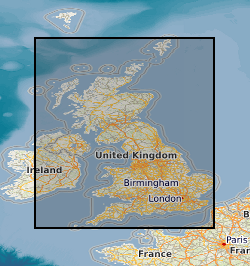
High level index to the contents of the boxes of Primary Geological Data resulting from deep underground coal exploration and exploitation in Great Britain donated by the Coal Authority in July 2001. Data for past and current collieries and for future prospects including borehole site plans, borehole logs , analyses and geophysical data etc. This index will diminish in importance as these data are merged with existing collections.
-
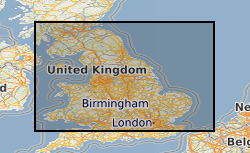
Prime Geological Data resulting from deep underground coal exploration and exploitation produced by the British Coal Board and/or its precursors. The collection dates back to the 18th century and covers all the British coal mining areas and includes borehole site plans, borehole logs, analyses and geophysical data etc. Apart from primary data relating to past and current collieries and for future prospects the information includes reports, interpretations and records of research. The majority of the collection was deposited with the National Geological Records Centre by the Coal Authority in July 2001.
-
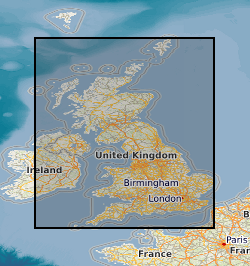
The Index to the Primary Geological Data resulting from Open Cast Coal exploration. The index lists the content of the boxes of data, including reports, interpretations and records of research in British coalfield areas. The Index lists information on past and current workings and for future prospects. The majority of the collection was deposited with the National Geological Records Centre by the Coal Authority in July 2001, but a small number of BGS records have been added subsequently.
-
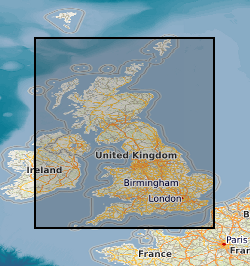
A series of tiled models of superficial thickness covering the UK. The models are derived by direct modelling (natural neighbour interpolation) of BGS Borehole records and BGS Digmap. For the purposes of modelling, superficial deposits include sediments deposited during the Quaternary, subsequent Holocene rivers and coastal systems and also modern anthropogenic material. i.e. deposits that are less than 2.6 million years old. Grids are overprinted with a minimum value so that areas where no bore data is present, but drift is known to occur are given a minimum 1.5m thickness. The superficial thickness models have been created as baseline datasets for the BGS Geohazard programme. They represent the first attempt by BGS to create nationwide models of such data and the models provide only a simple, mathematical interpretation of reality. The complexity of Superficial deposits in Great Britain is such that it is only possible to model indicative values of thickness and elevation. The models should never be used as a substitute for thorough site investigation.
-
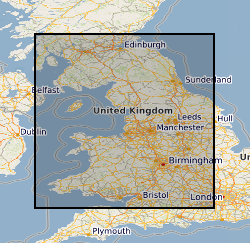
Primary Geological Data resulting from Open Cast Coal exploration. Collection of data includes reports, interpretations and records of research in British coalfield areas deposited by British Coal. Data for past and current collieries and for future prospects. The majority of the collection was deposited with the National Geological Records Centre by the Coal Authority in July 2001. The collection includes borehole site plans, borehole logs , analyses and geophysical data etc. BGS holdings of opencast data are to be integrated with these collections. New data from coal companies will be added as it is received.
-
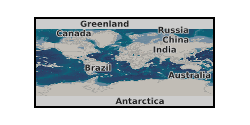
This data set is an inventory of aerial photographs held at BGS, Murchison House office and consists of a MS Excel spreadsheet containing 11 worksheets. Each worksheet contains information pertaining to the different sub-collections within the collection (9 worksheets of aerial photographs, one for aerial photograph scans, one for satellite imagery). Quality and coverage of metadata varies from worksheet to worksheet, depending on the size of the sub-collection, its pre-existing organisation, and the way in which the sub-collection was brought together (if it was not a complete entity when the inventory was started). Areal extent ranges from Shetland in the N (1200000) to the southern Lake District in the S (480000) and from Barra in the W (65000) to Stockton-on-Tees in the E (450000). By late 2001 all photos (except those being worked on by cuurently by staff) were catalogued in the inventory spreadsheet. By late 2003, the inventory spreadsheet had been updated with newly purchased and newly discovered photos as well as modified to include details of digital holdings and satellite imagery.
-
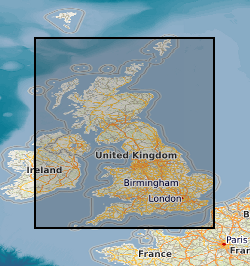
Scanned images of the records of onshore Great Britain (or near shore) site investigation reports held in the BGS archives in paper, microfilm or digital format. The entire collections in BGS Edinburgh have been scanned, but in BGS Keyworth currently only new reports received since 2002. Scanning started in 2002 and is ongoing with new records being scanned and added to the collection. Images are stored in TIFF format (Tagged Image File Format). Indexed on the site investigation database and the boreholes within the report, and their images, are associated via the borehole database.
-
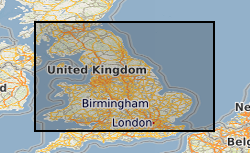
Data resulting from deep underground coal exploration and exploitation. Collection of data, dating back to the 18th century, includes reports, interpretations and records of research in all British coalfield areas deposited by the British Coal Corporation. Data for past and current collieries and for future prospects. The majority of the collection was deposited with the National Geological Records Centre in July 2001. The collection includes borehole site plans, borehole logs , analyses and geophysical data etc. Records were selected for retention by British Coal Surveyors and BGS.
-
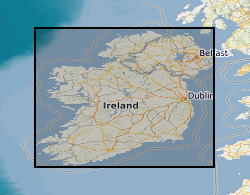
1:50,000 maps showing the main geological bedrock divisions in Northern Ireland. The bedrock shown on each map comprises the bedrock geology, which represents the outcrops (at surface) and subcrops (at near-surface, beneath superficial deposits) in Northern Ireland. For each rock unit there is a brief generalised description showing the major rock group, rock type and age under the following headings. LEX_D: The name of the selected area. This can be a group, formation or igneous intrusion e.g. dyke. LEX_RCS: Map code as it appears on the published 1:250,000 map. RCS_D: The name of the dominant types of rock (lithologies) in the different areas shown on the map e.g. granite. The names of the rock types given here are often generalisations, appropriate for the large areas of geological coverage at this scale. These areas may include a number of different geological formations whose distribution can only be portrayed on more detailed geological maps. RANK: Identifies formations and groups. Min_Time_D and Max_Tim_D: The age of the rock unit in terms of periods, relatively smaller units of geological time e.g. Carboniferous, Jurassic etc. Some of the map areas include rocks with a range of ages and these are shown as such e.g. Triassic to Cretaceous. The oldest metamorphic rocks are described as Moinian and Dalradian. The rocks range in age from those deposited relatively recently, some 2 million years ago, back to ancient and highly altered Precambrian rocks over 2500 million years old. In broad terms the youngest rocks are found in the south and east of the UK, the oldest in the north and west. VERSION: Version of the data. RELEASED: Date of release/update of the data. CAUTION Because of the generalisation and simplification used in the compilation of this map, it should not be used to determine the detailed geology of any specific sites. It is best used to provide a basic understanding of the geology of the country in general, and for showing the geology of large regions where broad trends are more important than specific details. Persons interested in the detailed geology of particular sites should consult the latest large-scale maps or the Geological Survey of Northern Ireland at:- Geological Survey of Northern Ireland Colby House Stranmillis Court Belfast BT9 5BF
-
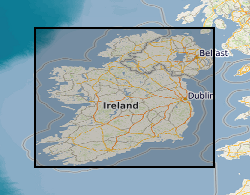
A 1:250,000 map showing the main geological bedrock divisions in Northern Ireland. The bedrock shown on GeoIndex map comprises the bedrock geology, which represents the outcrops (at surface) and subcrops (at near-surface, beneath superficial deposits) in Northern Ireland. For each rock unit there is a brief generalised description showing the major rock group, rock type and age under the following headings. LEX_D: The name of the selected area. This can be a group, formation or igneous intrusion e.g. dyke. LEX_RCS: Map code as it appears on the published 1:250,000 map. RCS_D: The name of the dominant types of rock (lithologies) in the different areas shown on the map e.g. granite. The names of the rock types given here are often generalisations, appropriate for the large areas of geological coverage at this scale. These areas may include a number of different geological formations whose distribution can only be portrayed on more detailed geological maps. RANK: Identifies formations and groups. Min_Time_D and Max_Tim_D: The age of the rock unit in terms of periods, relatively smaller units of geological time e.g. Carboniferous, Jurassic etc. Some of the map areas include rocks with a range of ages and these are shown as such e.g. Triassic to Cretaceous. The oldest metamorphic rocks are described as Moinian and Dalradian. The rocks range in age from those deposited relatively recently, some 2 million years ago, back to ancient and highly altered Precambrian rocks over 2500 million years old. In broad terms the youngest rocks are found in the south and east of the UK, the oldest in the north and west. VERSION: Version of the data. RELEASED: Date of release/update of the data. CAUTION Because of the generalisation and simplification used in the compilation of this map, it should not be used to determine the detailed geology of any specific sites. It is best used to provide a basic understanding of the geology of the country in general, and for showing the geology of large regions where broad trends are more important than specific details. Persons interested in the detailed geology of particular sites should consult the latest large-scale maps or the Geological Survey of Northern Ireland.
 BGS Data Catalogue
BGS Data Catalogue